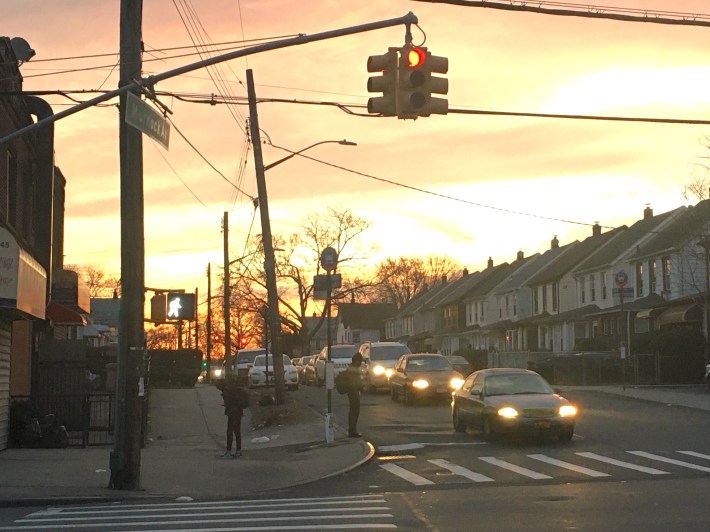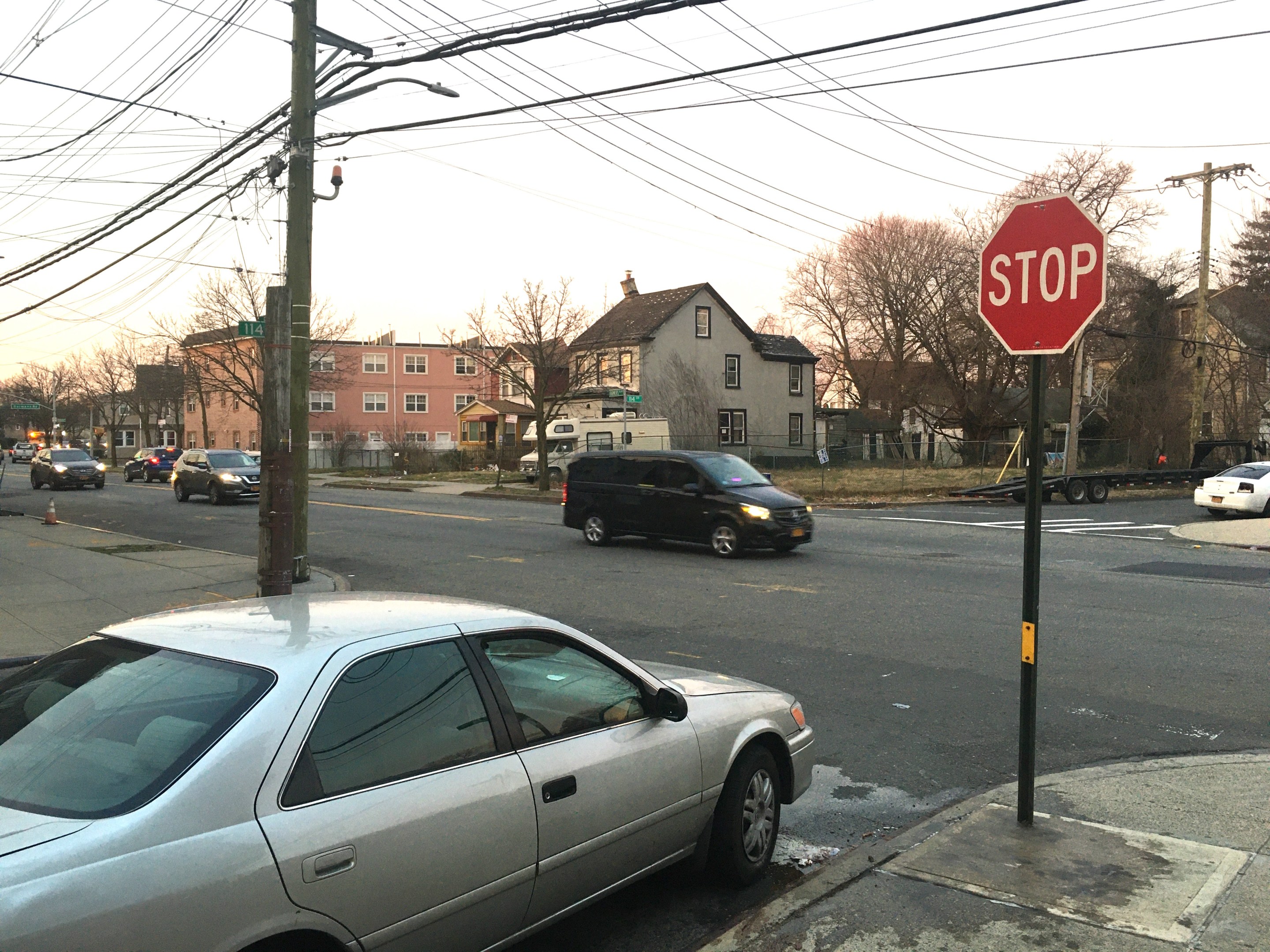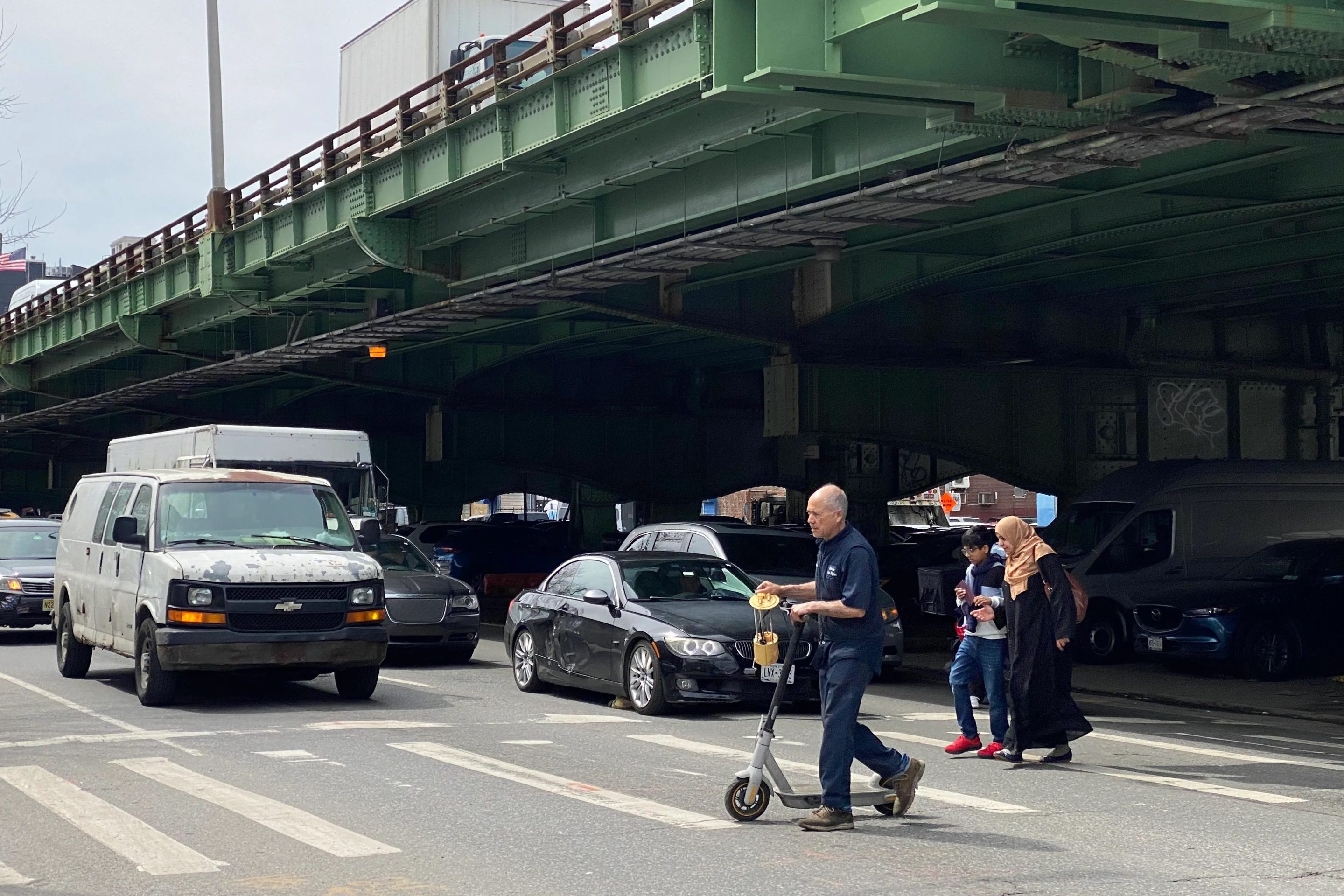With New Yorkers confined to their neighborhoods, if not their apartments, now is the time to be thankful for small street improvements close to home.
Here’s what I’m thankful for: The Department of Transportation recently changed the timing of traffic lights along Farmers Boulevard, a minor arterial that runs from Jamaica through St. Albans to Kennedy Airport, near my home in southeastern Queens. Specifically, the DOT added “leading pedestrian intervals,” enabling pedestrians to get a seven-second, green-light head start on crossing before drivers may start moving.

The result? The four-lane street has become easier and less stressful to use. I hope the change is just the beginning of many safety improvements on this dangerous road, which had 3,024 crashes, injuring 842 motorists, 133 pedestrians and 16 cyclists from January 2014 through December 2019, according to crashmapper.org. Two pedestrians died.
I first noticed the change in mid-February on my way to catch a bus. As I crossed the street, the first driver waiting at the light was not immediately speeding toward the crosswalk. Those behind him weren’t honking, either — as they normally would. For once, I didn’t have to keep up my guard and fend for myself.
Not only that, the DOT added about 20 seconds to the time the signal time allotted to cars entering Farmers Boulevard from the side streets. At first, I thought that was silly because there are never more than about five drivers coming out of these quiet streets during any green-light cycle.
But that extra green time also helps pedestrians. The more I used the street in the following days on foot, the more I realized how much less stressful it is not having to rush to the other side. Also, I came to realize that others, such as the elderly, may need the extra time because they are not so fleet footed as I am at age 26.
Thanks to the LPIs, the extra time, along with reduction in careless close passes from turning drivers, make the simple act of crossing the street a much more dignified experience. My bus stop is next to a cluster of small shops and restaurants and a block away from an elementary school, so people of all ages are experiencing the benefits.
Now, not every intersection on Farmers Boulevard has a traffic light — and a traffic light on every corner isn’t “the answer.” Traffic signals only exist because drivers cannot be controlled in other ways. There’s about three or four intersections in between traffic lights on Farmer Boulevard; drivers and cyclists flow freely until they hit the next light, and anyone coming out of a side street has to wait for them behind a stop sign.

But the extra green time helps here as well, by creating larger gaps in traffic — making it much easier to find a safe time to cross, even at intersections without traffic lights. The DOT seems to have found a way to make every intersection safer without putting traffic lights everywhere.
The shortest path from my house to my local library is through one of these intersections, and I used to have to wait many minutes while drivers rolled by without stopping for me. Even if a gap opened in one direction, drivers were still coming from the other. Being impatient, I often proceeded and waited on the double-yellow line in the middle of the street — which is unsafe, I know.
Now, I feel so much safer and am willing to wait, both on foot and on my bike, because the gaps have become consistent and predictable. I’ve never driven before, but I’m sure it’s now easier for drivers who traverse these streets, too.
These changes don’t solve everything. Although the new leading pedestrian intervals make it easier for pedestrians to cross Farmers Boulevard, the street remains way too wide, encouraging speeding and endangering the cyclists who have used the road for years. The DOT next should add protected bike lanes and bicycle parking; narrowing the street would provide a feeling of safety and draw ridership. Bike lanes should be considered low-hanging fruit right now as cycling booms and car traffic slacks off because of the coronavirus.
But, for today, I feel respected as a vulnerable street user because of these changes, which sacrifice a small amount of convenience for drivers in order to provide safety for pedestrians and cyclists.
“TransitNinja” blogger Samuel Santaella lives in southeast Queens and volunteers for Riders Alliance and Transportation Alternatives. Follow him on Twitter at @transitninja205.






